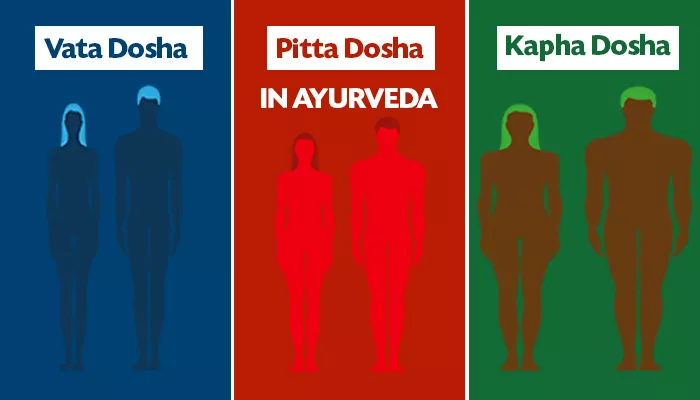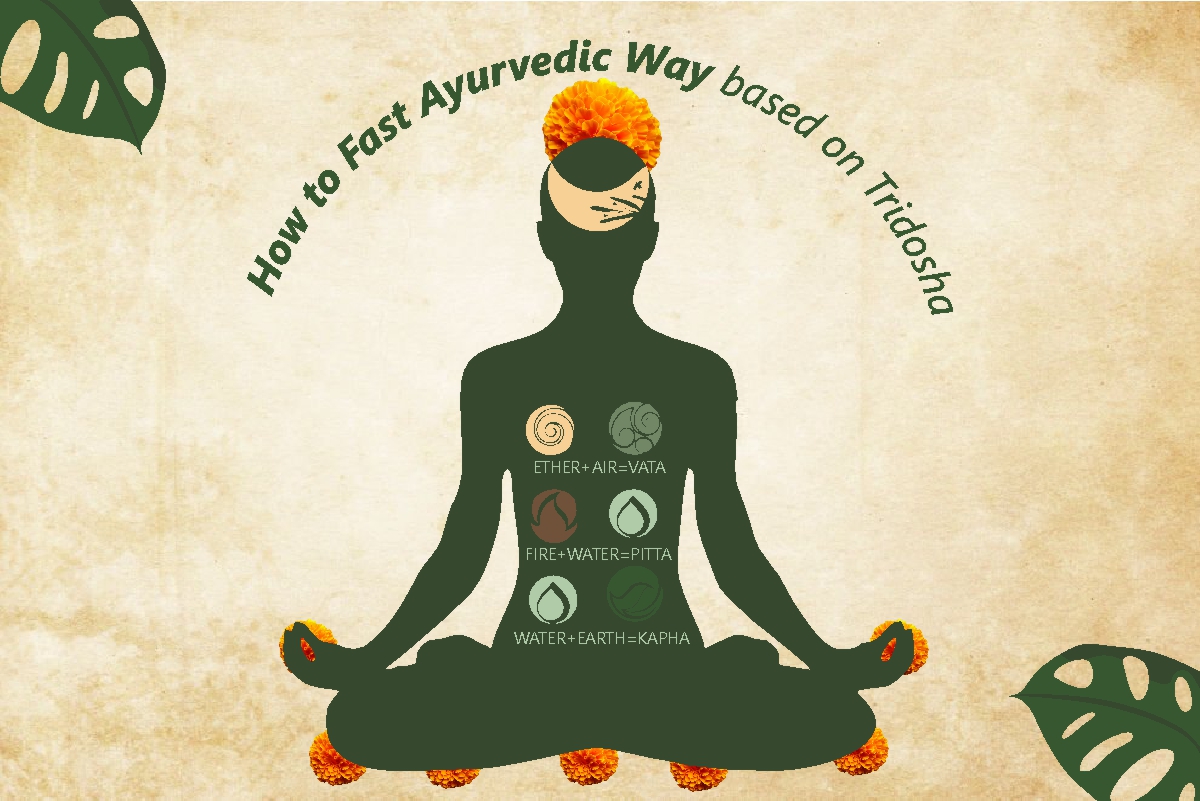Fasting during Navratri is an effective way to cleanse your body, improve digestion and boost happiness.
Fasting can mean different things to different people. But according to Ayurveda, fasting doesn’t mean a total deprivation of food.
It rather refers to a cleansing method for our bodies keeping in mind the food, thoughts and breath that you are inhaling.
This is because Ayurveda helps you align your health & wellness with your mind, soul and body in order to give you good health holistically.
Every individual and its body is surely different from one another. So, we are here to guide you on how you should fast based on your prakriti.

FASTING FOR VATA PRAKRITI:
Fasting can aggravate vata since it heightens the vata’s light, dry and cold qualities.
You should never perform a water fast or fast for longer than two days if you have a vata constitution or vata imbalance.
An excellent place to start is with a 12 to 24 hour fast. A khichdi diet for 3-5 days while adding ghee is an ideal method for vata individuals to purify their bodies.
You can mono-fast with sweet orange, bananas, apples, cherries, pineapples, melons, mango, grape juice, all of which are vata-pacifying.
It is often preferable to follow a khichdi mono-fast if you have a health concern, just make sure not to exhaust yourself.
To keep your vata dosha balanced, make sure to stress more on oily and moist food. Kheer and paneer that has been sautéed are excellent additions to your diet.
Dry foods should be avoided at all costs because of the already dry nature of vata.
FASTING FOR PITTA PRAKRITI:
Pitta dominating individuals frequently struggle to withstand fasting due to the strong state of their agni (metabolic system). So, if you are a pitta person, it is advised for you to fast no longer than three days.
You can undertake a diet that includes cool foods like milk, yogurt, raita, cucumber. Pears in particular have the power to quickly calm a furious Pitta.
Drinking sweet lassi after lunch can aid in digestion. Sweet, bitter and astringent are three flavors you must include in your diet in order to have a balanced pitta.
Smoothies including pitta pacifying fruits like apples, berries and melons can be a great way for body detoxification.
Having khichdi made with ghee and pitta pacifying herbs can be an excellent option as Ancient Ayurvedic literature claims that ghee is cooling for the mind and body.
FASTING FOR KAPHA PRAKRITI:
Due to excessive moisture and weakened agni (metabolic function), kapha dominant individuals can fast very easily. These people can easily tolerate fasting for up to 18 hours.
Eating foods that are light, warm, dry, and rough can help balance excessive kapha and neutralize its qualities.
Smoothies, herbal teas, cinnamon tea are some liquids they can indulge in their diet.
Boiling potatoes and dry fruits like almonds and walnuts are advised. Fruits such as apples, berries, pears and pomegranates can be consumed.
It is crucial to use the least amount of oil possible when cooking. Wheat, breads, deep-fried dishes that are also extremely oily are some foods that are generally a bit heavy for kapha individuals.
Fasting is surely a great way to strengthen your inner agni (fire) and remove the metabolic toxin waste called ama from your body.
Besides religious purposes, it is extremely healthy for detoxifying your body and maintaining a healthy weight.
But it is always advised to fast according to your dosha for a healthy fasting.
Read Also :

